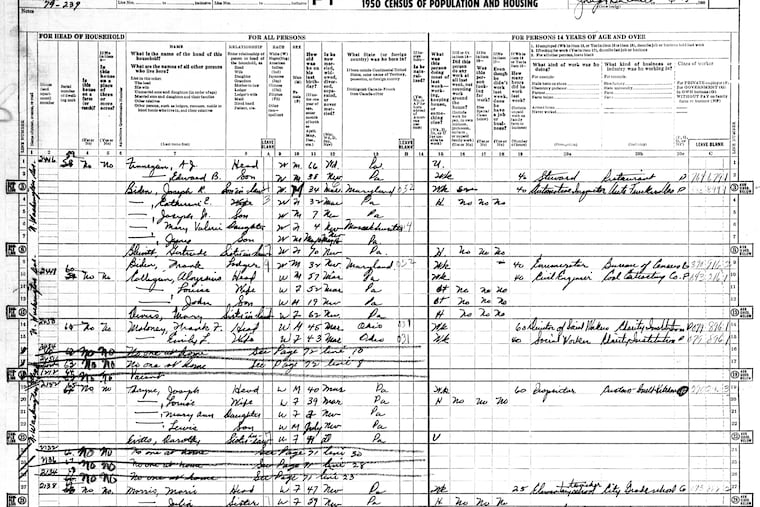How to explore data from the 1950 Census (and why you should)
Whether you're looking up family members or want to find out more about public figures or just your city, here's how and why to use the data in the 1950 Census, which is now public.

Seventy-two years ago, enumerators across the country went house by house, for the last time, to count 151.3 million people for the U.S. Census. On April 1, 2022, the full extent of their findings — names, ages, income, jobs, and even whether or not they had a kitchen sink at home — became available to the public.
Here’s why that is cool and what you should know:
What data are available?
Just as with every census, some data from the 1950 report have long been public, but what’s new is that we can now access deeper answers that shed light on how people lived after the Second World War.
Census officers asked 38 questions in 1950 — a deep dive compared with the nine asked in 2020 — and you can now search the records on census forms, population, Native American reservations, district maps, state and county information, and more.
Only 20 questions were asked of all residents. The remaining 18 — that cover details such as the birth country of a person’s parents; if a person served in the First or Second World War; their history of marriage, divorce, and childbirth, and more — were asked only of a smaller sample of the population, so you won’t be able to find out those details for everyone.
What can I find in the census?
You can look up records for individuals — such as relatives, celebrities, or public figures who were alive in 1950 and living in the U.S. — and find out more about them.
Besides finding interesting information on your state’s and city’s populations, you can get a glimpse of what people’s lives were like, if they were in the U.S. at the time. This is especially useful if you are interested in genealogy or looking for relatives. Even if you don’t have a lot of information about a person, as long as you have a general idea of where they lived, their name, or last name, you will be able to find the records. Companies such as Ancestry.com have already announced that they will be processing and analyzing the data from this census to make it more easily accessible.
Why is this information available now?
It’s because of the 72-Year Rule. In 1978, the Census Bureau and the National Archives were concerned about the privacy of people’s information, so a federal law was put in place to protect records for 72 years from the date they were given. Why 72 years? Because according to the Pew Research Center, that was then a person’s life expectancy. Although this law came into effect 28 years after the 1950 Census, it applies retroactively.
How can I access 1950 census data?
You can find all the records, resources, and a search tool at 1950census.archives.gov.